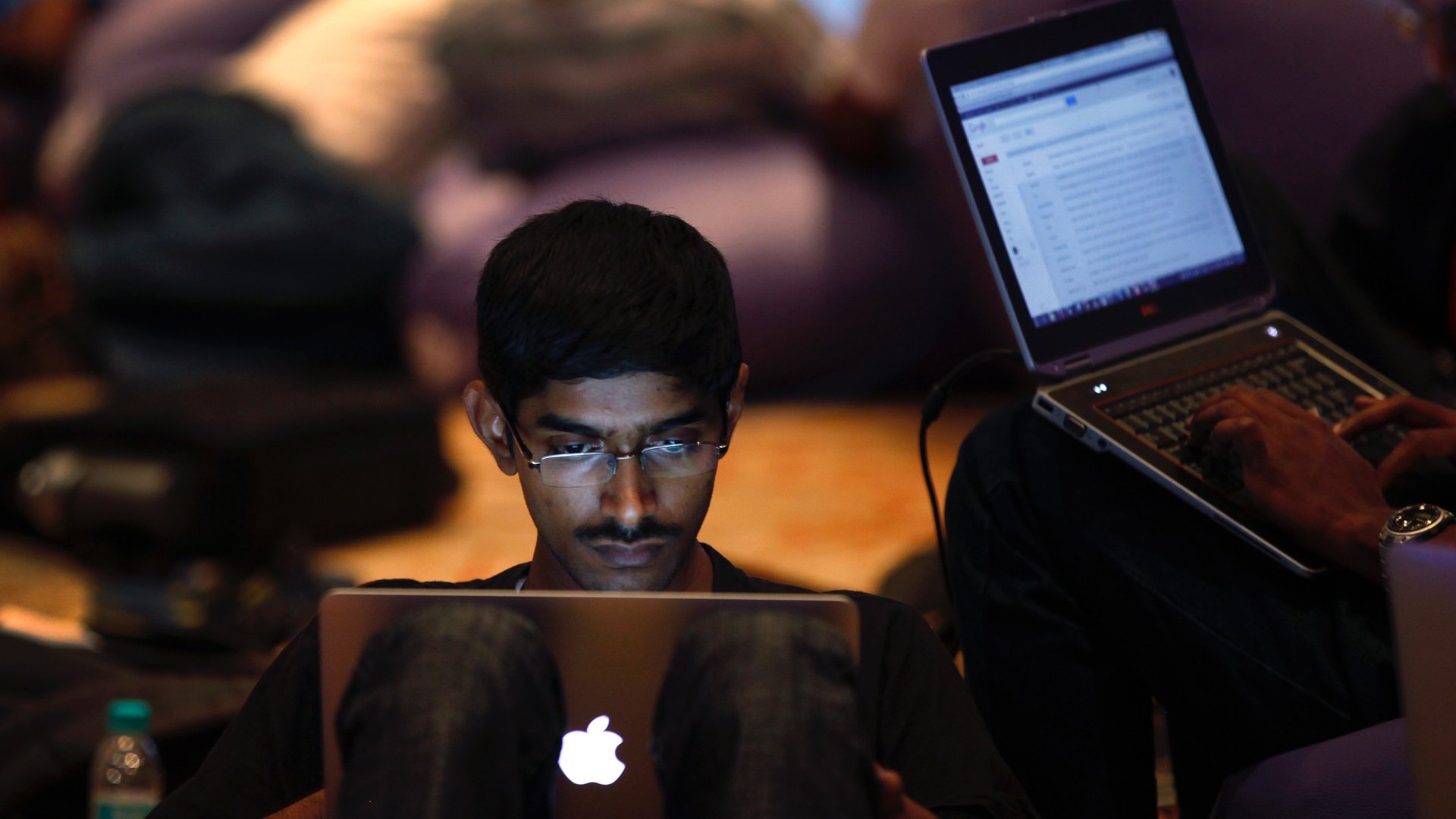India has the best internet policy in the world, but actually getting online is another story
In a recent Economist Intelligence Unit study of internet inclusiveness, India ranked first among 75 countries when it comes to having policies in place to ensure connectivity.


In a recent Economist Intelligence Unit study of internet inclusiveness, India ranked first among 75 countries when it comes to having policies in place to ensure connectivity.
That, according to the report, is in part because India already has put in place a fund dedicated to expanding baseline levels of telecommunication to all citizens. In addition, in 2009, the country introduced a national digital identification system (Aadhar) to maintain an online log of its people. And, according to Tech2, the government will invest Rs100 billion ($1.5 billion) to bring high-speed connectivity to 250,000 villages by 2018.
India’s policy score was also boosted by a rise in e-governance. Digital initiatives by the government are no longer limited to simply having websites for different ministries—now, citizens are able to make utility bill payments and seek out social benefits online, too. The number of e-transactions between the government and its citizens has grown by more than 200% in two years: from 840 million in 2013 to 2.6 billion in 2015, according to a Deloitte report.
India shared the top spot for best internet policy with Japan, Oman, Malaysia, and Chile. However, despite its robust policy score, India’s overall rank was 36. That’s because the country is crippled by infrastructural shortcomings and bureaucratic nightmares that make it nearly impossible to implement all the policies with ease—leaving many in India without the internet access the policies promise.
The report, commissioned by Facebook’s Internet.org, based its assessment of overall performance on scores in four categories:
- Availability: quality and breadth of available infrastructure required for access and levels of Internet usage.
- Affordability: the cost of access relative to income and the level of competition in the Internet marketplace.
- Relevance: existence and extent of local-language and relevant content.
- Readiness: the capacity for citizens to access the Internet, including skills, cultural acceptance, and supporting policy.
Each of these categories is broken down into a few subcategories. Below are India’s rankings across all:
Coming in first for policy couldn’t do much to account for India’s poor showings across the board elsewhere.
India fares especially poorly in availability. Network availability and quality were weak points, and the fact that many in India don’t even have consistent basic electricity didn’t help. While many pockets of the country are subject to frequent power cuts, a sizable chunk of the population—240 million Indians—don’t have access to electricity at all.
A 3Q 2016 Akamai report says that India’s 4.1 megabits per second (Mbps) average Internet speed is the lowest in Asia. That might be changing: that was an improvement from the 3.5 Mbps logged at start of 2016.